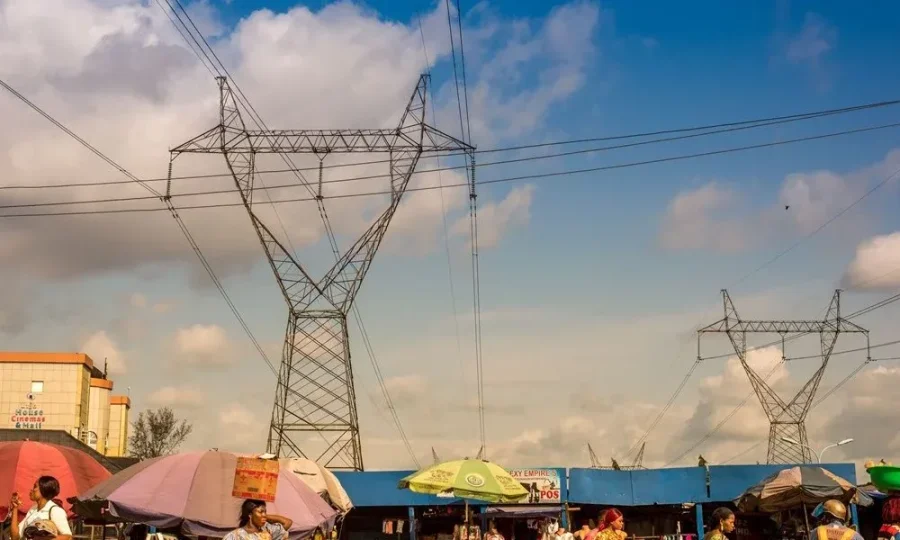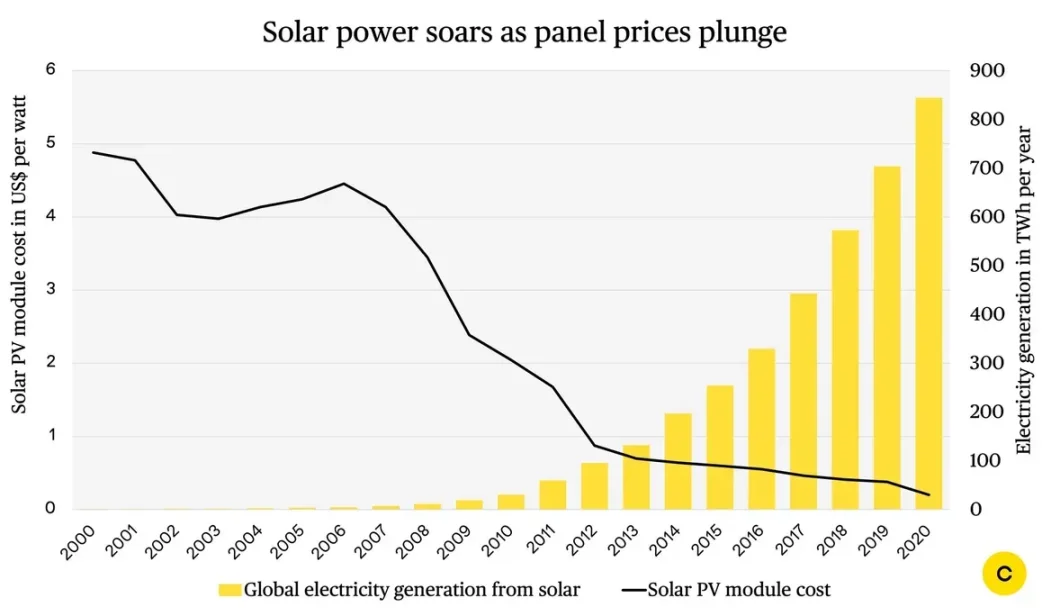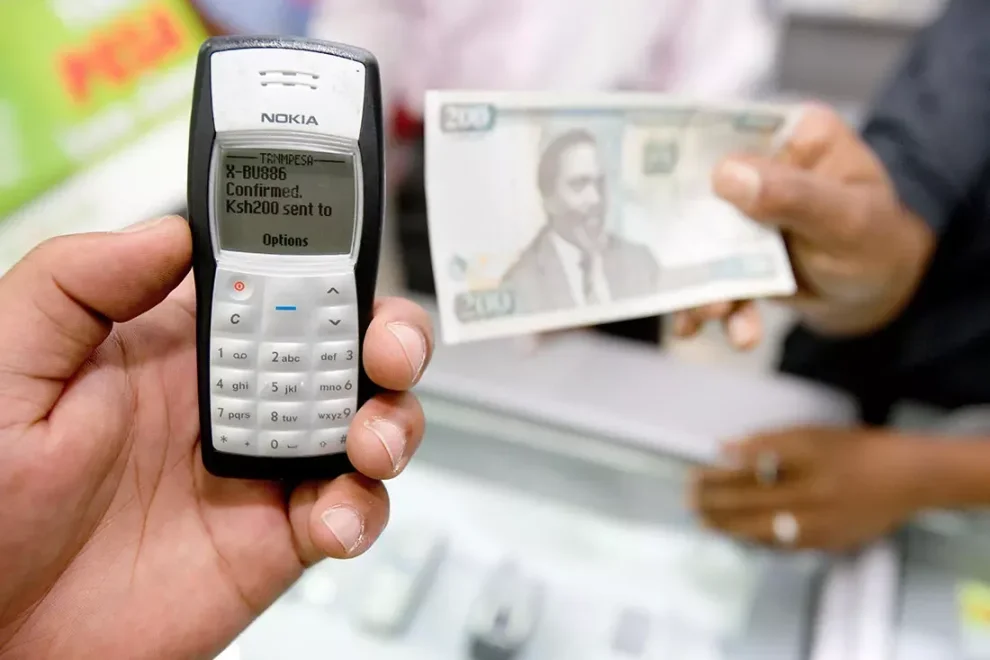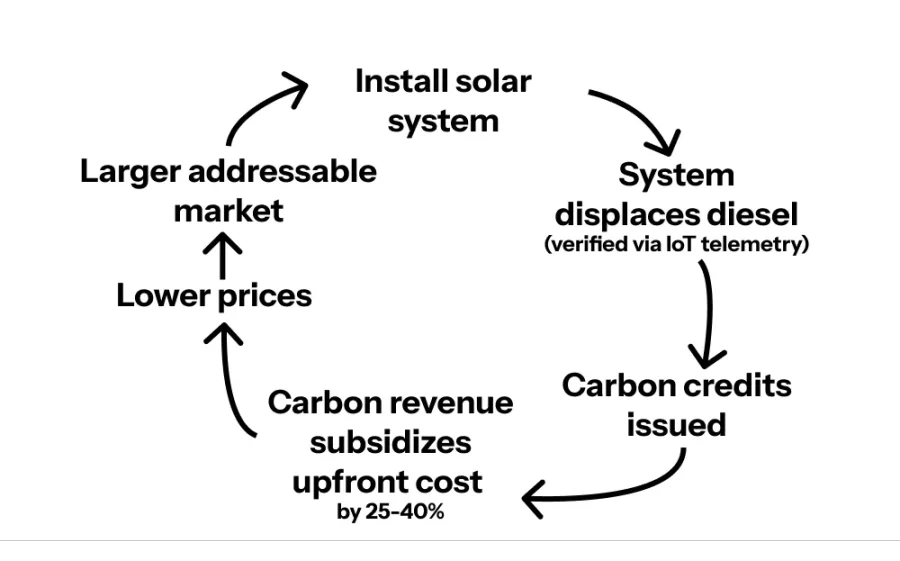Solar punk is emerging in Africa; is decentralization the future of global infrastructure?
The “Waiting for the Grid” Scam
Consider this infuriating statistic: 600 million people in sub-Saharan Africa lack reliable electricity. The issue isn’t technological or due to lack of demand—the real problem is that the economics of grid expansion to rural areas simply don’t add up.
The traditional development model goes as follows: first, build centralized power plants; next, lay hundreds of kilometers of transmission lines; then, deliver electricity to millions of households; collect payments; and finally, provide ongoing system maintenance.
This approach worked during America’s electrification in the 1930s, when labor was cheap, materials were subsidized, and governments could seize land for transmission. But try powering a farmer earning just $600 a year and living four hours from the nearest paved road, and the model breaks down.
The data tells the story:
- Cost to connect a rural household to the grid: $266–$2,000
- Average monthly electricity bill for rural households: $10–$20
- Investment payback period: 13–200 months (assuming payments are reliably collected)
- Electricity payment collection rates in rural areas: inconsistent and often unreliable

Rational utility companies do what any business would: stop building where unit economics collapse—which often happens in densely populated regions.
This has been the silent reality in developing countries for the past 50 years. “We’re extending the grid!” really means: grid extension isn’t economically feasible, but we need to say so to keep donor funds coming.
Meanwhile, 1.5 billion people spend up to 10% of their income on dirty fuels like kerosene and diesel. They walk hours just to charge a phone, can’t refrigerate medicine or food, children can’t study after dark, and women inhale cooking smoke equivalent to the health risk of two packs of cigarettes daily.
The Solar Hardware Revolution
While debates raged over solar subsidies and mega projects, the cost of solar technology quietly underwent a seismic transformation.

Solar panel price evolution:
- 1980: $40/Watt
- 2000: $5/Watt
- 2010: $1.5/Watt
- 2020: $0.3/Watt
- 2025: $0.2/Watt
Prices fell 99.5% over 45 years—the “Moore’s Law” of solar. Even more dramatic is the cost reduction of complete solar home systems.
Solar home system progression:
- 2008: $5,000 (affordable only for wealthy urban Kenyans)
- 2015: $800 (within reach of middle-class farmers)
- 2025: $120–$1,200 (truly accessible for smallholders)
Battery costs are down 90%, inverters are cheap, LED bulbs are much more efficient. Chinese factories are world-class, and African logistics have improved.
These trends converged around 2018–2020, flipping the economics of off-grid solar. Hardware barriers have been solved.
Yet one major hurdle remains: for those earning $2 per day, a $120 upfront payment is prohibitively expensive.
This is where the real story begins.
The Miracle of Zero Transaction Costs
Flashback to 2007: Kenya’s Safaricom launched M-PESA, a mobile payment platform enabling money transfers via text message.

Everyone thought it would flop—who would send money by phone?
By 2025, 70% of Kenyans will use mobile payments, not as a supplement but as a replacement for banks. Kenya leads the world in per capita mobile payment transactions.
What made it work? It solved real pain points: Kenyans were already sending money informally, and M-PESA made it cheaper and safer.
This is critical: M-PESA created a payment channel with near-zero transaction costs, making small payments economically viable.
This shattered barriers to innovative funding models and enabled “Pay-As-You-Go” (PAYG) for solar.
From Product to Service: The PAYG Breakthrough
This innovation underpins everything else. The business logic:
- Companies (Sun King, SunCulture, etc.) install solar systems at homes
- Users pay around $100 upfront
- They pay $40–$65 monthly for 24–30 months
- Systems have GSM chips for remote monitoring
- Missed payments trigger remote shutoff
- Continued payments mean uninterrupted electricity
- After 30 months, users own the system and enjoy free power for life
The magic? Users aren’t buying a $1,200 system—they’re swapping a weekly $3–$5 kerosene bill for a $0.21 daily solar subscription ($1.50 per week, half the cost of kerosene). It’s cheaper, brighter, charges phones, powers radios, and eliminates respiratory hazards.
Default rate? Over 90% pay on time.
The reason: the asset delivers real daily value. The alternative is darkness and kerosene lamps—no one wants that.
This is the innovation everyone misses: cheaper hardware makes solar affordable, PAYG makes it accessible, and mobile payments make PAYG viable.
Let’s see what happens when these three factors combine, through two case studies.
Case Study 1: Sun King
Sun King sold 23 million solar products in 2023, serving 40 million customers across 42 countries, aiming for 50 million units by 2026. Its products include handheld solar lamps, multi-room home kits, and clean LPG stoves.
Product portfolio:
- Handheld solar lamps ($50–$120)
- Multi-room home entertainment systems ($200–$500)
- Clean LPG stoves (via PayGo Energy acquisition)
- Phone charging, backup batteries, lighting

This is compounding growth—the moat deepens with every step forward.
Outside Africa, few realize Sun King holds over 50% market share in its niche. It’s not a startup anymore—it’s a dominant infrastructure provider.
That’s like a startup owning half the U.S. residential solar market—except the impact and TAM are even greater without a legacy grid competitor.
Case Study 2: SunCulture—$14,000 per Acre Agricultural Transformation
Sun King focuses on lighting and household electrification; SunCulture drives agricultural productivity, with eye-popping results.
Core challenges:
- 95% of sub-Saharan farmland relies on rain
- Farmers spend $2 billion/year on diesel pumps
SunCulture’s solution:
- Solar irrigation pumps
- IoT remote monitoring
- PAYG installments ($100 upfront, $40–$65/month)
- Free installation, 10-year warranty
- Drip irrigation included
Impact:
- Crop yields rise 3–5x
- Income per acre jumps from $600 to $14,000
- Zero marginal cost after payoff (no diesel)
- Year-round irrigation, no seasonal limits
- 17 hours/week saved on manual water hauling
Scale:
- 47,000+ systems deployed
- 40,000+ farmers served
- 50%+ share of smallholder market
- Operations in Kenya, Uganda, Ethiopia, Côte d’Ivoire, Zambia, Togo
This isn’t charity—it’s a rocket ship.
Here’s the kicker:
SunCulture’s solar pumps replace diesel, saving 2.9 tons of CO2 per pump annually.
47,000 pumps × 2.9 tons = 136,000 tons/year; over 3 million tons in 7 years.
And crucially: there are buyers for these carbon reductions.
Making Others Pay for Your Infrastructure
Enter carbon credits. SunCulture is the first African solar irrigation company registered with Verra, the global leader in carbon standards. Each ton of CO2 reduced sells for $15–$30 (premium agricultural credits, not shaky forestry offsets).
Here’s the turbocharged flywheel:

- Install solar systems
- Replace diesel (verified by IoT)
- Convert savings to carbon credits
- Sell credits to offset-hungry corporates
- Carbon income covers 25–40% of upfront cost
- Lower cost → 4–5x market expansion
- Deploy more systems → generate more credits
- Repeat
Even better: some buyers pre-pay for future credits.
British International Investment and SunCulture launched “carbon-backed equipment financing”: $6.6 million in funding, carbon price risk absorbed, SunCulture gets capital up front, farmers buy pumps at 25–40% lower prices.
This is the new model: climate externalities become revenue. The North’s carbon problem subsidizes the South’s energy access.
Carbon credits transform climate infrastructure into an investable asset class, enabling scale.
So what’s next?
Why Aren’t These Companies Everywhere?
Why is the market so concentrated? Because running the entire value chain is brutally hard. You need:
- Hardware manufacturing expertise
- Supply chain reach in fragmented markets
- Last-mile distribution (Sun King: 29,500 agents)
- Mobile payments integration
- Credit scoring for the unbanked
- IoT/telemetry systems
- Customer support in 10+ languages
- Financing (equity, debt, securitization)
- Carbon market partnerships
- Regulatory compliance in 40+ countries
Most firms can do 2–3 of these. Winners do them all.
This creates massive barriers to entry and lasting moats. Cheaper panels alone aren’t enough—the real moat is full-chain execution.
Can This Model Scale?
Let’s run the numbers:
- 600 million in sub-Saharan Africa lack reliable power
- 570 million African smallholder families
- 900 million use traditional stoves
That’s just Africa—add Asia’s 1 billion without power, and the market tops $300–$500 billion.
But the real opportunity is much bigger. Solar is the Trojan horse—the actual business is building financial relationships with hundreds of millions of users.
You’re building a digital infrastructure layer supporting:
- Consumer loans (phones, motorcycles, appliances)
- Livestock/agricultural finance
- Insurance
- Healthcare
- Education
- Payments
The true market: all spending from 600 million people moving into the middle class.
Second-Order Effects of Scale
Zoom out: when 100 million+ gain electricity via this model, what happens?
- Kids study at night → higher test scores → better jobs
- Adults work at night → higher incomes
- Year-round irrigation → 3–5x yields → food security
- Phone charging → mobile payments → financial inclusion
- Refrigeration → vaccine storage → disease prevention
- Refrigeration → longer shelf life → less food waste
- No kerosene smoke → fewer respiratory illnesses
- Clean stoves → 600,000 fewer indoor pollution deaths/year
- Diesel replaced → cleaner air
Here’s the Key Point
This is 21st-century infrastructure: not government-led, not centralized, not reliant on 30-year megaprojects. Instead, modular, distributed, digitally metered, remotely monitored, financed pay-as-you-go, carbon-subsidized, deployed by private firms in competitive markets.
20th-century infrastructure:
- Centralized generation
- Government-led
- Large-scale project finance
- 30-year build cycles
- Monopolistic utilities
21st-century infrastructure:
- Distributed/modular
- Private sector-led
- Pay-as-you-go finance
- Deploy in days/weeks
- Competitive markets
This is how the future gets built.
Downside Risk Analysis
What could derail this?
First, it’s not a universal fix—PAYG solar suits households and smallholders, not factories or heavy industry, and can’t replace the grid entirely.
- Currency risk: Companies raise funds and buy hardware in USD, but collect payment in local currency. Currency collapse can kill unit economics overnight.
- Political/regulatory risk: Governments may restrict lending, impose import tariffs, or subsidize grid/diesel to protect state utilities.
- Default risk: 10% default seems manageable but is vulnerable; economic shocks, drought, or instability can spike defaults.
- Maintenance complexity: Panels last 25 years; batteries, 5. Pumps break. Rural service networks are costly.
- Carbon price swings: In 2024, carbon credits fell from $30/ton to $5/ton. If 25–40% of affordability relies on carbon income, price drops are painful.
- Grid competition: Governments could extend the grid with enough subsidies, even if uneconomic.
- Supply chain bottlenecks: Port congestion, customs, tariffs, Chinese export controls, last-mile logistics—all can delay installs and tie up working capital.
Sun King is now manufacturing in Africa, set to save $300 million in import costs over the next few years.
Upside Risk Analysis
Downside matters, but let’s consider how this model could not just succeed—but explode.
The Cost Curve Has Room to Fall
Solar panel prices dropped 99.5% in 45 years; the journey isn’t over.
Current snapshot:
- China’s solar manufacturing capacity: 600 GW+
- Global demand: ~400 GW/year
- Oversupply → impending price crash
What’s next:
- Panels: $0.2/W → $0.1/W by 2030
- Batteries: sodium-ion scale-up could cut costs 50% more
- Solar home systems: $120–$1,200 → $60–$600
$60 entry-level systems will expand the addressable market from 600 million to 2 billion people. This is about electrifying rural Africa, India, Bangladesh, Pakistan, Southeast Asia, and Latin America.
Development Finance Awakens: A Flood of Cheap Capital
Today, these firms pay 12–18% interest. What if development finance steps up?
Ideal outcome:
- World Bank, IFC, BII create dedicated funds
- “De-risked” loans for proven operators like Sun King, SunCulture
- Finance cost drops from 15% to 5–7%
Breakthrough effects:
- Monthly payments drop 30–40%
- 200 million+ new users
- Payback period shrinks to 18–24 months
- Deployment speed increases 3–5x, unit economics improve
This is how microfinance took off after Grameen Bank—billions in cheap capital followed.
Network Effects Are Just Taking Off
The underestimated factor: mass-scale social proof.
Growth flywheel:
- Village A: 3 families install solar
- Neighbors see kids studying at night, no kerosene smoke, phones always charged
- 12 months later, 30 families in Village A have solar
- Nearby villages hear → agents flooded with orders
- Company expands distribution to meet demand
The data:
- Since 2018, Sun King’s customer acquisition cost is down 60%
- Why? Word of mouth, referrals—“my cousin has one”
- In mature markets like Kenya, 40%+ sales are referrals
Once 20–30% of households have solar, it’s the default. You’re not an early adopter—you’re behind. This mirrors how cell phones spread in Africa: hit the tipping point, and adoption explodes.
The grid that never reached rural villages becomes a relic. While experts debated for 50 years how to extend 20th-century infrastructure, Africa built the 21st-century version instead.
Modular, distributed, digital, user-financed, carbon-subsidized.
Solar punk isn’t sci-fi. It’s 23 million solar systems, 40 million lives improved, and the true shape of infrastructure once you break free from the past.
Statement:
- This article is reprinted from [Foresight News], copyright belongs to the original author [Skander Garroum]. If you object to this reprint, please contact the Gate Learn team for prompt resolution.
- Disclaimer: The views and opinions expressed are solely those of the author and do not constitute investment advice.
- Other language versions of this article are translated by the Gate Learn team. Do not copy, distribute, or plagiarize the translated article without explicitly referencing Gate.
Related Articles

The Future of Cross-Chain Bridges: Full-Chain Interoperability Becomes Inevitable, Liquidity Bridges Will Decline

Solana Need L2s And Appchains?

Sui: How are users leveraging its speed, security, & scalability?

Navigating the Zero Knowledge Landscape

What is Tronscan and How Can You Use it in 2025?
